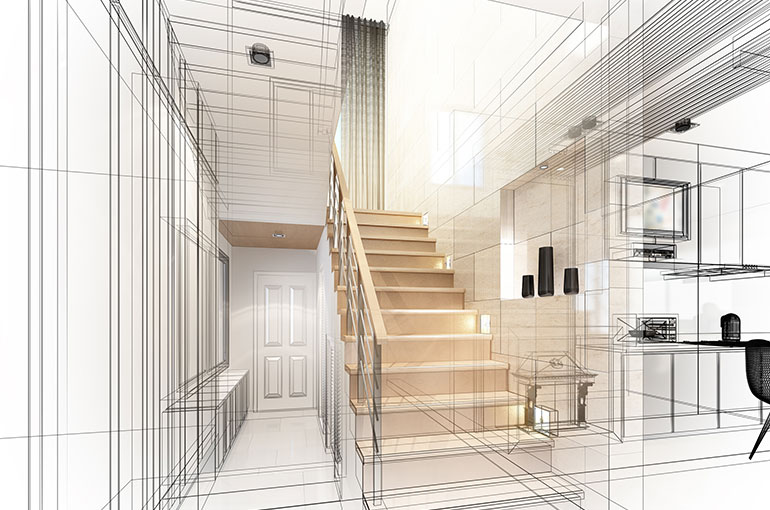Just How CDA Architects Include Eco-Friendly Practices in Architectural Projects
Comprehending the Collaborative Refine In Between Designers and Engineers in Modern Building Projects
The collective procedure between architects and designers is important in modern-day building and construction projects, as it harmonizes style intent with design expediency. Exploring these dynamics reveals understandings that can significantly influence task results and overall industry requirements.
The Significance of Cooperation
The collective harmony in between architects and designers is necessary for the effective understanding of any kind of building and construction task. This collaboration brings together unique proficiency and perspectives, allowing the assimilation of innovative design with useful design options. By working with each other, designers and designers can make certain that a task not only satisfies visual and useful requirements however also follows security, sustainability, and financial constraints.
Collaboration cultivates a common vision, promoting the positioning of goals and assumptions from the beginning. This positioning is essential in addressing potential challenges and mitigating threats that could develop throughout the job lifecycle. A collective technique enables for the efficient allowance of resources, enhancing both time and price.
The importance of collaboration reaches the repetitive procedure of layout and construction, where responses from designers can inform building decisions, bring about even more possible and sustainable designs. Conversely, designers can influence engineers to believe artistically concerning how to accomplish architectural integrity without jeopardizing creative intent. Ultimately, the collective connection between architects and designers is not just beneficial; it is fundamental to the development of high-quality, useful, and ingenious constructed environments that meet the requirements of culture.
Communication Strategies and Devices
Effective interaction methods and devices are important for promoting cooperation between engineers and engineers throughout the project lifecycle. Establishing clear networks of interaction is vital to make sure that all employee are straightened with job purposes, timelines, and obligations. Regular conferences, both in-person and online, provide chances for stakeholders to review progress, address concerns, and make informed decisions.

Furthermore, embracing collaborative communication devices, such as Slack or Microsoft Teams, permits instantaneous messaging, file sharing, and recurring discussions, advertising a much more active feedback to arising concerns. Record management systems also play a vital duty in arranging job documentation, guaranteeing that all employee have access to the latest details.
Shared Goals and Project Vision
An unified task vision offers as the structure for effective partnership in between architects and engineers (cda architects). This shared vision not just aligns the efforts of both events however likewise establishes a typical structure for decision-making throughout the job's lifecycle. By look at this website expressing clear goals, stakeholders can properly browse the intricacies of modern construction jobs, making certain that both aesthetic and practical needs are met
Developing common objectives entails open dialogue and a comprehensive understanding of each technique's payments. Architects usually concentrate on layout intent, spatial partnerships, and user experience, while engineers highlight structural honesty, systems performance, and conformity with regulations. When these viewpoints are lined up, the result is a natural task that abides by both innovative aspirations and technological usefulness.
Furthermore, a well-defined job vision fosters liability amongst employee, urging each individual to take ownership of their function in achieving the desired result. Normal check-ins and collective workshops can even more strengthen this dedication, permitting adjustments to be made as the project develops. Eventually, a common vision not only improves team effort however also elevates the quality of the final deliverable, resulting in successful job completion.
The Function of Innovation
Leveraging modern technology has come to be essential in improving cooperation in between designers and designers. Building Details Modeling (BIM) stands out as a crucial technology, allowing both architects and designers to produce thorough 3D versions that envelop design intent and architectural honesty.
Additionally, cloud-based platforms enable smooth collaboration, allowing task stakeholders to access and update task data from anywhere. This cultivates a society of openness and accountability, as changes can be tracked and assessed in real-time. Furthermore, mobile applications more enhance communication, offering on-site teams with instant accessibility to project requirements and updates.
Arising innovations such as expert system and device discovering are also beginning to play a function in predictive evaluation, helping teams recognize potential issues prior to they develop. Eventually, the function of modern technology in architecture-engineering collaboration not just enhances operations efficiencies however additionally enhances development, causing more effective job outcomes. By embracing these technological advancements, engineers and designers can ensure a more natural and efficient collective process throughout the building lifecycle.
Situation Researches in Successful Collaborations
Countless instance researches highlight the profound influence of efficient partnerships in between engineers and designers on task outcomes. One notable instance is the cooperation on the High Line in New York City City, where landscape architects, engineers, and city coordinators worked with each other to transform a deserted railway right into a dynamic public park. This multidisciplinary strategy not just boosted the aesthetic high quality yet also ensured structural security and ecological sustainability.

The Burj Khalifa in Dubai further shows the relevance of collaborative efforts - cda architects. The assimilation of architecture and engineering expertise made it possible for the job group to accomplish unmatched elevations while adhering to security regulations and visual vision
These instances underscore the relevance of interaction, count on, and shared purposes. In today's intricate building and construction atmosphere, such collaborations are necessary to browsing challenges and delivering jobs that meet both practical and visionary objectives.
Verdict
Finally, the partnership between engineers and engineers is vital for the success of modern-day building tasks. Effective communication strategies, a shared project vision, and the assimilation of advanced technologies are vital components that facilitate this collaboration. By promoting a culture of responsibility and leveraging tools such as Building Information Modeling (BIM), teams can see this website browse job complexities, making certain that aesthetic, functional, and sustainability objectives are achieved. Eventually, this synergy results in ingenious and effective task outcomes.